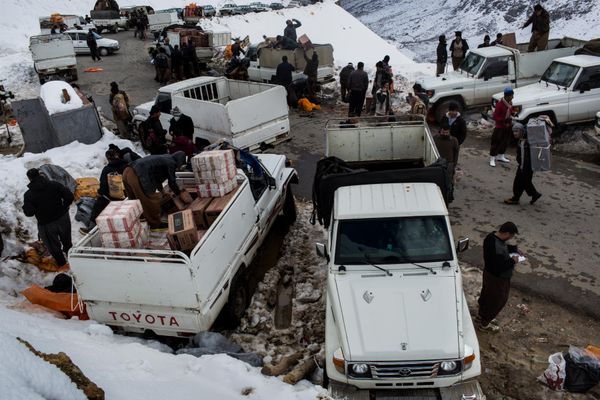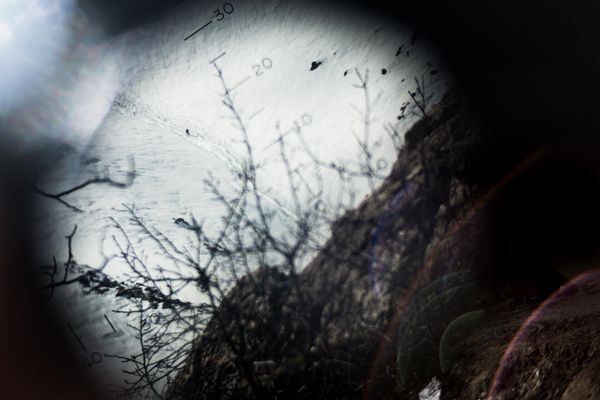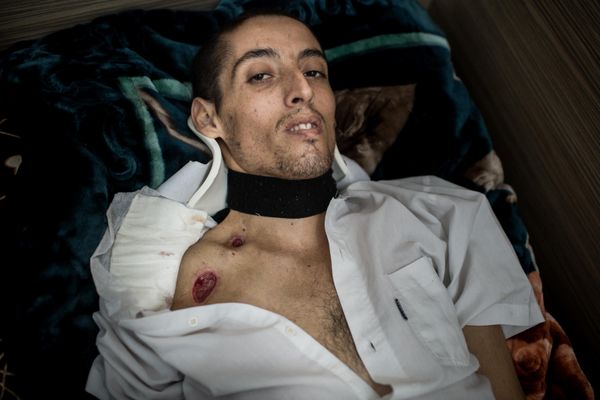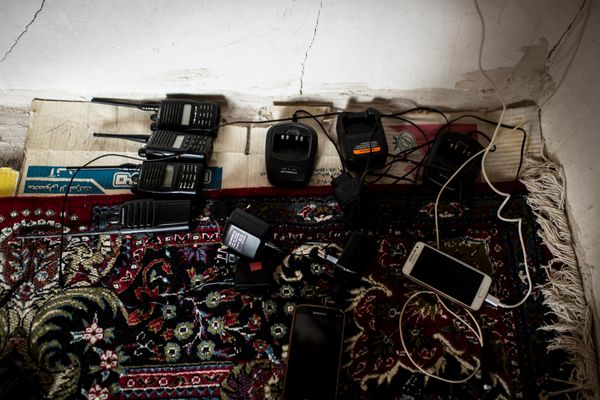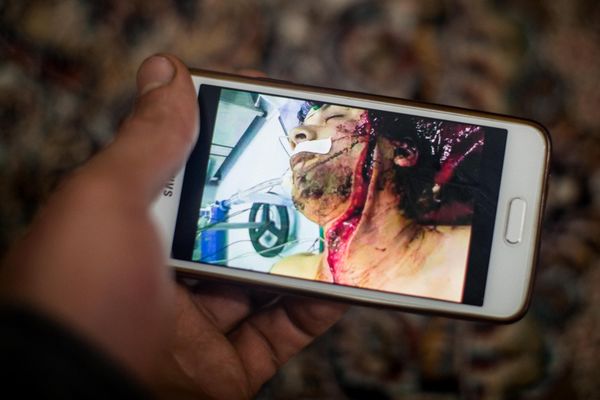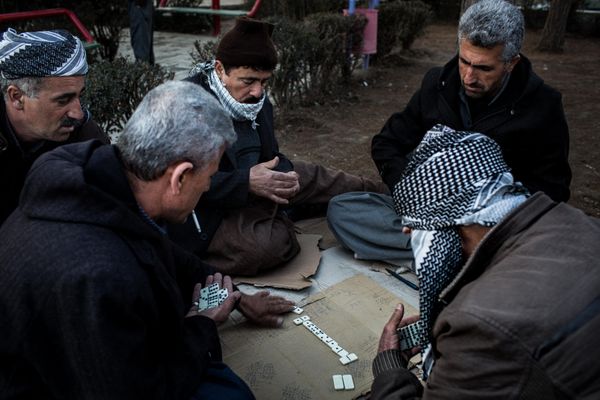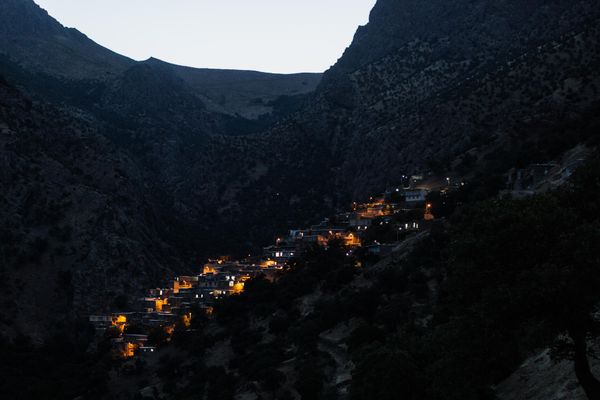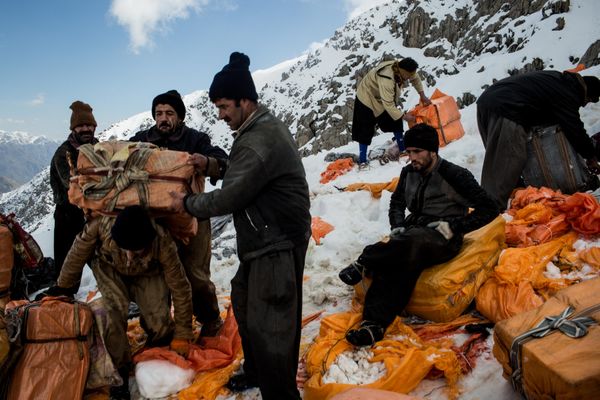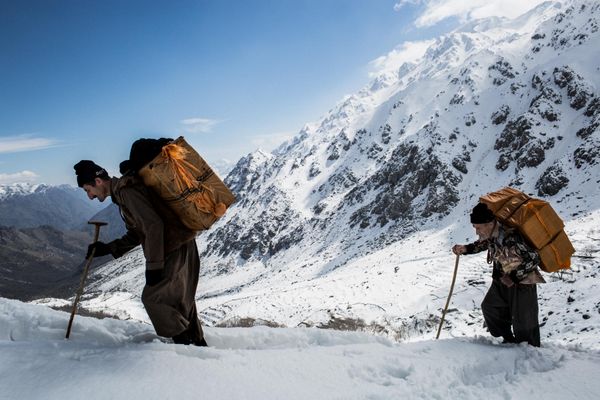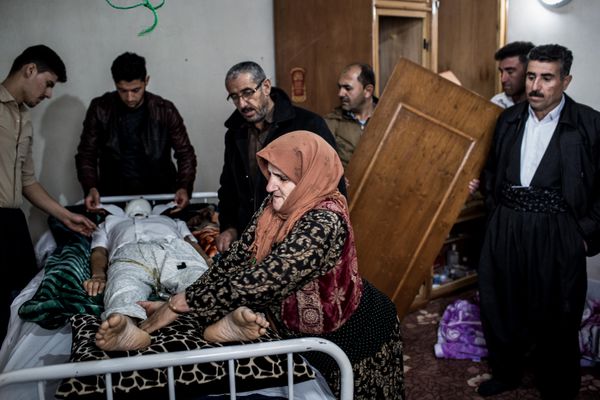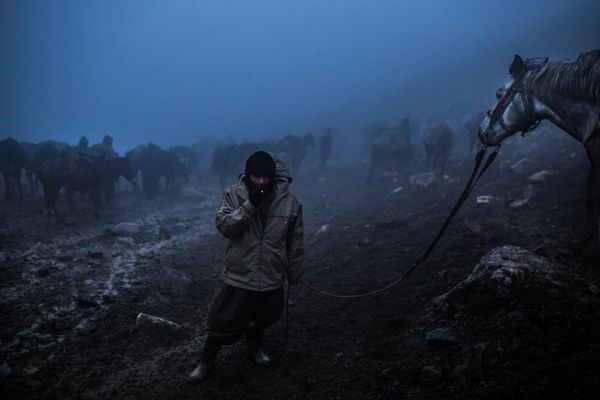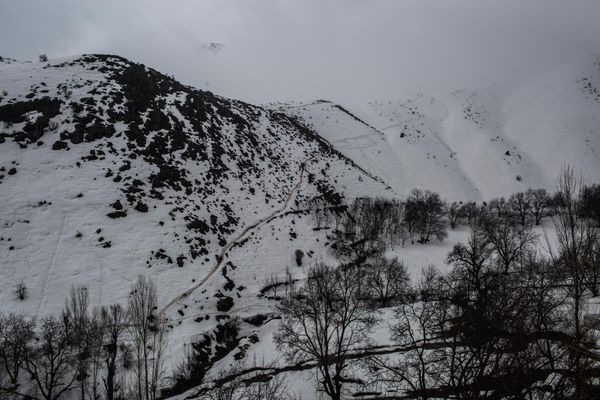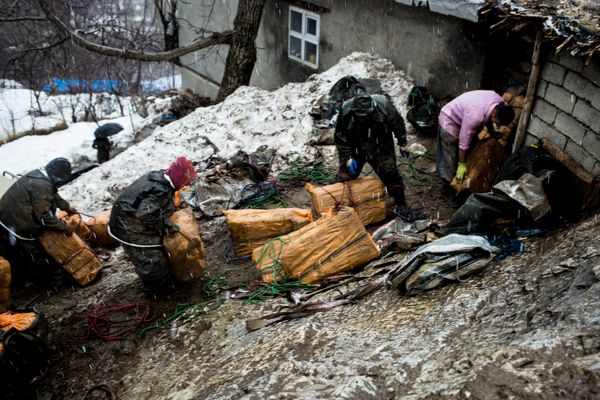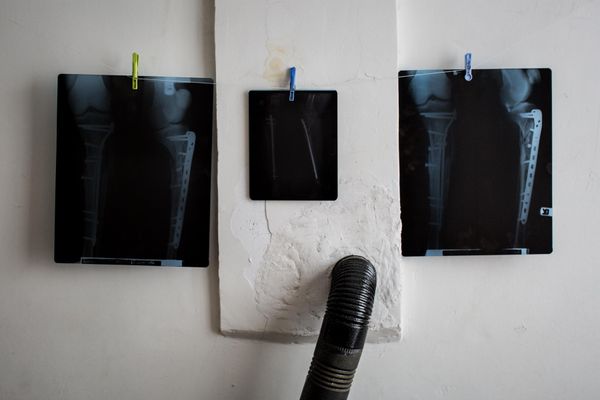Where the Wind carries Bullets
-
Dates2017 - Ongoing
-
Author
- Location Iran, Iran
-
Recognition
Caught between Life and Death: Where this trail begins…
“Whenever we come for smuggling to the border, we are actually trading our lives to earn our bread for the next day“ 17-year-old Bahman told me when we were riding on smuggling donkeys in the mountains at the Iranian-Iraqi border. Both in front and behind us was a queue of donkeys in serpentines as far the eyes could reach before everything vanished in layers of mist and fog.
Three hours later, caught in a frightening darkness in the no-mans-land between the countries, I was thinking of my conversations on the path with the smugglers. Unfamiliar with the path, I had lost the group and sought shelter in a corner after the harrowing echoes of gun shots by Iranian border guards had dispersed group. Marx’ famous quote “The proletarians have nothing to lose but their chains.” was continuously coming up my mind. It is structural unemployment in the region that forces smugglers to risk their lives in order to earn enough for a couple of days of decent living.
Iran has a 1458km long common border with Iraq in the west. The area that is bordering Iraqi Kurdistan is mostly inhabited by a Kurdish Sunni population. an estimated 40.000 people from the towns and villages in the Iranian west earn their living from smuggling of goods such as garment, housewares, alcoholic beverages and cigarettes. Counting in their child-rich families, this results into nearly 400.000 people in the area being directly dependant on smuggling business.
The lack of jobs and structural unemployment is seen as the main issue nurturing the smuggling business. Because of strategic calculations, the Kurdish inhabited region has always been kept structurally weak by the central government. After the Islamic Revolution of 1979, a possible Kurdish Sunni independence has been a risk in the eyes of the Shia government in Tehran. Hence structural repressions keeping the region low educated and economically weak draw a continuous line in the government’s plan. Facing institutional discrimination the Kurdish people in Iran perceive themselves as second class citizens and hence go into illegal smuggling with all the risks involved as it enables them to nurture their families.
Coolbar, a construction of two Farsi words “Back” and “Carrying” is the local term for the group of traditional smugglers who carry the goods on their back through borders. I met the 51-year-old Darwish Mohammad when he was weeping over his child. His 27-year-old son, Shafi’ has been disabled since he was shot by border guards in February 2017. Darwish, who has been a coolbar for 30 years and whose facial expressions let one guess his age twenty years more, told me with a sobbing voice: “I never wanted my children to become coolbars. But what else should they have done when we don’t have food to eat? This is not just! We defended these very borders 8 years long during the war [with Iraq] and bled on this soil. Now our children have no employment and the government has forgotten us”.
In March 2017 I started my project on traditional smuggling in the west of Iran. Now I am still photographing on the Iranian side, but am planning to continue this project on the Iraqi side - where this trail begins. To this end I want to cover the areas where coolbars take their goods for transport. I want to meet brokers who negotiate and deal with smugglers, but also deliver them the goods. As this is a story inevitably connected to the landscape, I furthermore aim to depict the rural lives of people in this area to show the relevance of smuggling for the people. And I want to accompany coolbars and other traditional smugglers on their hostile trails to depict the archaic nature of their work.
My goal is to produce an in-depth photo reportage along the smuggler’s path and to reach awareness for the situation of the Kurdish people that leads them into the business. A lethal business in which only last winter 16 men trying to earn a decent living were frozen to death, and in which tens of coolbars are shot dead by border guards on the trail every year.

